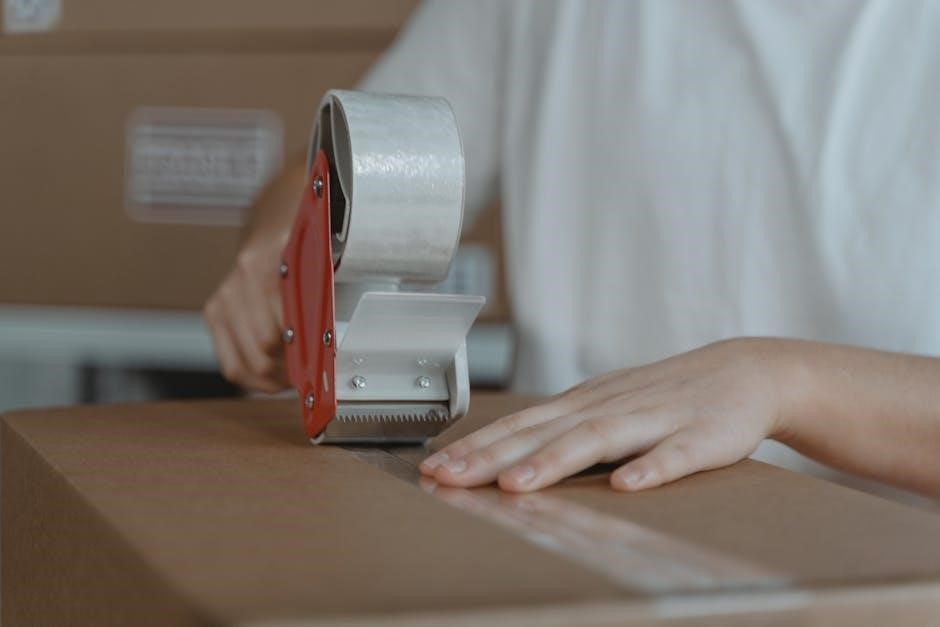Hierarchy of Control in Manual Handling

The hierarchy of control in manual handling is a systematic approach designed to minimize risks and hazards associated with manual tasks. It prioritizes control measures based on their effectiveness. The goal is to protect employees and enhance workplace efficiency through a structured framework.
The Hierarchy of Controls is a widely recognized system for minimizing exposure to workplace risks and hazards, especially in manual handling. This structured approach prioritizes control measures based on their effectiveness, ranging from the most effective to the least. The framework is designed to be applied linearly, starting with the most effective controls before moving to less effective ones.
The primary goal is to eliminate or reduce risks as much as reasonably practicable while maintaining a high return on investment. It guides employers in selecting appropriate control measures for manual handling tasks. The legislation requires employers to avoid hazardous manual handling where possible. They must assess the risks of potential injury and reduce the risks that may come with manual handling.
By systematically applying the Hierarchy of Controls, organizations can create safer working environments, reduce the likelihood of injuries, and improve overall productivity. Each level of control is designed to reduce exposure to a particular hazard, ensuring a comprehensive approach to workplace safety.
The Importance of Workplace Safety
Workplace safety is a paramount concern for any organization, directly impacting employee well-being, productivity, and overall success. A safe work environment fosters a culture of care and respect, boosting morale and reducing absenteeism. Prioritizing safety also minimizes the risk of accidents and injuries, which can lead to costly compensation claims, legal liabilities, and damage to reputation.
Effective safety measures, such as the Hierarchy of Controls, play a crucial role in preventing workplace incidents. By systematically identifying and mitigating hazards, employers can create a safer and more secure environment for their workforce. This proactive approach not only protects employees but also enhances operational efficiency and reduces downtime.
Moreover, adherence to safety regulations and best practices demonstrates a commitment to corporate social responsibility, enhancing the company’s image and attracting top talent. Investing in workplace safety is an investment in the long-term health and sustainability of the organization. It ensures a productive and engaged workforce, contributing to a positive and thriving work culture.
Manual Handling Definition
Manual handling encompasses any activity that involves the use of bodily force to lift, lower, push, pull, carry, or otherwise move or support a load. This includes a wide range of tasks, from simple actions like placing items on a shelf to more strenuous activities such as moving heavy objects across a warehouse. The key element is the physical exertion required to handle the load.
It is important to recognize that manual handling is not limited to heavy lifting; it also includes repetitive movements, awkward postures, and prolonged physical exertion. These factors can contribute to musculoskeletal disorders (MSDs), which are a common type of workplace injury. Therefore, a comprehensive approach to manual handling risk management is essential.
Understanding the scope of manual handling activities is the first step in implementing effective control measures. By identifying tasks that involve physical exertion, employers can assess the associated risks and implement strategies to minimize the potential for injury. This includes applying the Hierarchy of Controls, which prioritizes the most effective methods for reducing or eliminating manual handling hazards.

Levels of the Hierarchy of Control
The hierarchy of control includes five levels, each designed to reduce hazard exposure. They range from elimination (most effective) to personal protective equipment (least effective). The goal is to implement controls in a linear fashion, starting with the most effective option.
Level 1: Elimination
Elimination, the highest level in the hierarchy of controls, involves physically removing the hazard associated with manual handling. This is the most effective way to protect workers as it completely eliminates the risk of injury. The primary aim is to avoid manual handling altogether by identifying tasks that can be automated or redesigned to remove the need for human intervention.
For example, instead of manually lifting heavy boxes, consider using a conveyor system or a mechanical lift to move the items. This approach not only reduces the risk of musculoskeletal disorders (MSDs) but also enhances efficiency and productivity. By automating tasks, you eliminate the potential for human error and reduce the physical strain on workers.
Elimination requires a thorough assessment of all manual handling activities to identify opportunities for automation or redesign. It also involves brainstorming with workers to gather insights into potential solutions. The goal is to find innovative ways to remove the need for manual handling and create a safer working environment.
Level 2: Substitution
Substitution, the second level in the hierarchy of controls, involves replacing hazardous materials or processes with safer alternatives. In the context of manual handling, this means finding ways to reduce the weight, size, or awkwardness of loads to minimize the physical strain on workers. The goal is to make the task less demanding and reduce the risk of injury.
For example, instead of using heavy containers, consider using smaller, lighter containers that are easier to handle. Alternatively, you could replace a hazardous chemical with a less toxic one that requires less manual handling. This approach reduces the physical demands on workers and lowers the risk of musculoskeletal disorders (MSDs).
Substitution requires a careful evaluation of all materials and processes involved in manual handling. It also involves exploring alternative options that are safer and more ergonomic. By implementing substitution strategies, you can significantly reduce the risk of injury and create a more comfortable and productive working environment for employees.
Level 3: Engineering Controls
Engineering controls involve modifying the workplace or equipment to reduce exposure to hazards associated with manual handling. This level focuses on implementing physical changes that make tasks safer and easier to perform. The aim is to minimize the need for manual exertion and awkward postures, thereby reducing the risk of injuries.
Examples of engineering controls include providing mechanical aids such as forklifts, hoists, and conveyors to assist with lifting and moving heavy loads. Redesigning workstations to ensure that items are within easy reach and at a comfortable working height is another effective measure. Adjusting the layout of the workspace to reduce the distance workers need to carry items can also minimize strain.
Implementing engineering controls requires a thorough assessment of the workplace and the tasks performed. It also involves identifying areas where modifications can be made to reduce the physical demands on workers. By investing in engineering controls, employers can create a safer and more efficient working environment, reducing the risk of musculoskeletal disorders and other injuries.
Level 4: Administrative Controls
Administrative controls involve implementing policies, procedures, and training programs to minimize the risks associated with manual handling. This level focuses on modifying work practices and employee behavior to reduce exposure to hazards. While less effective than elimination, substitution, or engineering controls, administrative controls play a crucial role in creating a safer work environment.
Examples of administrative controls include providing training on proper lifting techniques, workstation setup, and risk awareness. Implementing job rotation to reduce repetitive movements and physical strain is another common measure. Scheduling regular breaks to allow employees to rest and recover can also minimize fatigue-related injuries. Developing and enforcing safe work procedures for manual handling tasks is essential.
Effective administrative controls require ongoing monitoring and evaluation to ensure their effectiveness. Regular audits of work practices and employee feedback can help identify areas for improvement. It’s also crucial to communicate safety information clearly and consistently to all employees. By implementing comprehensive administrative controls, employers can significantly reduce the risk of manual handling injuries.
Level 5: Personal Protective Equipment (PPE)
Personal Protective Equipment (PPE) represents the last line of defense in the hierarchy of control for manual handling. It is employed when other control measures are insufficient to completely eliminate or reduce risks. PPE includes items worn by individuals to minimize exposure to hazards. While essential, PPE should not be the primary control method.
Examples of PPE relevant to manual handling include gloves to improve grip and protect hands from abrasions or impacts. Safety shoes with slip-resistant soles and toe protection can prevent foot injuries. Back supports or braces may be used in some cases, although their effectiveness is debated. Eye protection, such as safety glasses, might be necessary when handling materials that could cause eye injuries.
The proper selection, fit, and use of PPE are crucial for its effectiveness. Employees must receive training on how to use and maintain PPE correctly. Regular inspections should be conducted to ensure PPE is in good condition and replaced when necessary. While PPE can provide a barrier against certain hazards, it does not eliminate the hazard itself and relies on consistent use by employees.

Applying the Hierarchy of Control to Manual Handling
Applying the hierarchy of control to manual handling involves a step-by-step approach. This systematic methodology reduces risks by prioritizing the most effective control measures. It begins with eliminating the need for manual handling, followed by reducing the load, and reorganizing activities.

Step 1: Avoid Manual Handling (Elimination)
The first and most effective step in the hierarchy of control for manual handling is elimination. This involves completely removing the need for hazardous manual handling tasks; By avoiding manual handling altogether, you eliminate the risk of injury at its source. This approach offers the greatest level of risk reduction and return on investment.
Elimination can be achieved through various methods, such as automating manual tasks or redesigning processes to avoid lifting, pushing, pulling, or carrying. For example, delivering goods directly to the point of use eliminates multiple handling steps. Using remote controls to operate machinery also removes the need for physical exertion.
When considering elimination, ask whether the manual handling activity is truly necessary. Can the task be redesigned, automated, or outsourced to avoid manual handling? Exploring these options can significantly reduce the risk of musculoskeletal disorders (MSDs) and other injuries. Prioritizing elimination not only protects workers but also enhances efficiency and productivity in the workplace.
By focusing on eliminating manual handling, organizations can create a safer and more ergonomic work environment. This proactive approach demonstrates a commitment to worker well-being and reduces the potential for costly injuries and lost productivity.
Step 2: Reduce the Load (Substitution)
If eliminating manual handling entirely isn’t feasible, the next step is to reduce the load. This involves substituting heavier items with lighter, smaller, or easier-to-handle alternatives. The goal is to minimize the physical strain on workers during manual handling tasks. By reducing the weight, size, or awkwardness of the load, you can significantly lower the risk of injury.
Substitution can take various forms, such as using lighter materials, breaking down large loads into smaller units, or employing mechanical aids to assist with lifting and carrying. For example, replacing heavy containers with lighter ones or using dollies to move equipment can reduce the physical demands on workers.
When considering substitution, evaluate the properties of the materials being handled. Can heavier items be replaced with lighter alternatives without compromising quality or performance? Can large loads be divided into smaller, more manageable portions? Exploring these options can help to reduce the risk of musculoskeletal disorders (MSDs) and other injuries.

Prioritizing load reduction demonstrates a commitment to worker safety and promotes a more ergonomic work environment. By implementing substitution strategies, organizations can create a healthier and more productive workplace for their employees.
Step 3: Reorganize the Activity or Environment (Engineering Controls)

When elimination and substitution aren’t fully effective, reorganizing the activity or environment becomes crucial. This step focuses on implementing engineering controls to modify the workspace and tasks, reducing manual handling risks. Engineering controls involve making physical changes to equipment, workstations, or processes to minimize exposure to hazards.
Reorganizing the activity can include optimizing workflow, adjusting workstation height, or improving layout to reduce reaching, bending, and twisting. For example, positioning materials closer to the point of use can minimize the distance workers need to carry them.
Modifying the environment can involve providing mechanical aids such as conveyors, lifts, or hoists to assist with heavy lifting or repetitive tasks. Ensuring adequate lighting, proper ventilation, and slip-resistant flooring can also improve safety and reduce the risk of accidents during manual handling.
Engineering controls are essential for creating a safer and more ergonomic work environment. By making physical changes to the workplace, organizations can significantly reduce the physical demands on workers and prevent injuries.
Implementing engineering controls demonstrates a proactive approach to workplace safety and shows a commitment to protecting employees from manual handling hazards.

Examples of Control Measures
Control measures are specific actions taken to reduce or eliminate manual handling risks. These measures vary depending on the task and workplace but are crucial for employee safety. Effective controls align with the hierarchy, prioritizing elimination and substitution before other methods.
Automating Manual Tasks
Automating manual tasks is a highly effective control measure, often representing the best approach within the hierarchy of controls. This involves replacing human effort with machines or automated systems, significantly reducing the risk of musculoskeletal disorders (MSDs) and other injuries associated with manual handling. For example, instead of workers manually lifting and moving heavy boxes, a conveyor belt system could be implemented to transport them automatically.
Another example is using robotic arms for repetitive tasks that require precision and strength. Automation not only reduces the physical strain on workers but also increases efficiency and consistency in operations. This approach is particularly beneficial in industries such as manufacturing, warehousing, and logistics, where manual handling is a frequent and demanding part of the job.
Implementing automation may require initial investment, but the long-term benefits often outweigh the costs. Reduced injury rates, increased productivity, and improved employee morale are just a few of the advantages. Additionally, automation can lead to better quality control and reduced errors, further enhancing the overall efficiency of the workplace.
Using Remote Controls
Employing remote controls is another effective engineering control measure in the hierarchy, aimed at minimizing manual handling risks. This involves using devices that allow operators to control machinery or equipment from a safe distance, thereby reducing the need for direct physical interaction with potentially hazardous loads or environments.
For instance, remote-controlled cranes or forklifts can be used to lift and move heavy materials without requiring workers to be in close proximity to the load. Similarly, remote-controlled valves or switches can be used to manage fluid or gas flows, eliminating the need for manual operation in dangerous areas. This approach is particularly useful in industries such as construction, mining, and chemical processing, where the risk of injury from manual handling is high.

By using remote controls, workers can operate equipment from a safe vantage point, reducing the risk of strains, sprains, and other musculoskeletal injuries. This also improves overall safety by minimizing exposure to hazards such as falling objects, chemical spills, or extreme temperatures. The implementation of remote controls can significantly enhance workplace safety and efficiency, making it a valuable tool in the hierarchy of controls.
Delivering Goods Directly to the Point of Use
Delivering goods directly to the point of use is a highly effective engineering control strategy within the manual handling hierarchy. This approach focuses on minimizing the number of times materials are handled by streamlining the delivery process and reducing unnecessary movement. By bringing items directly to where they are needed, we eliminate intermediate steps that often involve manual lifting, carrying, and repositioning, thus lowering the risk of injury.
This can be achieved through various methods such as implementing efficient supply chain logistics, using conveyors or automated guided vehicles (AGVs) to transport materials, and carefully planning the layout of the workspace to minimize travel distances. For instance, in a manufacturing setting, raw materials can be delivered directly to the assembly line rather than being stored in a separate warehouse and then manually transported.

By reducing the need for multiple handling steps, this strategy not only minimizes the physical strain on workers but also improves overall efficiency and productivity. It also reduces the risk of damage to goods during transit. Delivering goods directly to the point of use is a practical and effective way to enhance workplace safety and optimize workflow.

